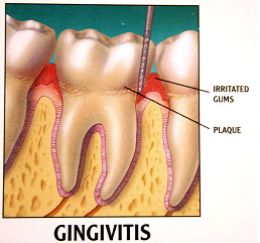Urinary infections
The most frequently observed anomalies of urinary microscopy. Availability
many white blood cells and bacteria typical >> << this situation. On the other hand, urine samples for routine tests >> << are not usually obtained through a sterile >> << technology, resulting in older specimens have a lot of bacteria on >> << With only a few leukocytes. The presence of numerous squamous cells
could indicate a source of external genital bacteria. In both situations, positive nitrites may indicate
urinary tract infection, but diagnosis is only safe >> << positive culture obtained from midstream. The bacteria associated with urinary tract infection mainly
coli (E. Coli), but other shapes can not be excluded. Bacteria coated urinary cells often with cystitis. This situation differs from
key purchase strattera cells are vaginal >> << flat cells covered kokkobakterii (Gardnerella
vaginal), forming a crust on the cells. Under the microscope
these latter cells have a granular aspect with blunt border. Like bacteria, the presence of
yeast sediment in the urine may indicate
infection. Often seen in the urine yeast Candida. The identification of this organism is relatively easy because it
normal shape of the club. In most cases, only isolated cells >> << seen, but in some cases, budding pseudohyphea be
observed. Other types of yeast can be seen in samples of urine. Since
wet undyed rain, some of these forms is difficult to distinguish from
red blood cells and certain other items. However, yeast contains DNA that can be demonstrated with >> << normal color as Sedistain. This dye preparation
stains yeast cells in blue. In some samples, the presence of yeast >> << a result of contamination with vaginal secretions. Yeast often
observed in samples that contain sugar. It is important that
careful with these samples, because yeast infections
frequent phenomenon in diabetic patients. Yeast containing throws
have a very high clinical significance, these pathognomonic of pyelonephritis. Parasite
, which is more often seen
Trichomonas in urine. Typically, the cell comes from
genital contamination of the sample. But
Trichomonas should be noted, as well as cases of bladder and prostate
colonization of this organism were reported in the literature
. Definition of a living cell is quite easy thanks to its impressive
mobility. Definition of fixed cells less
obvious. Special colors can be used for Trichomonas. These spots >> << can be found in the literature Parasitology
Other parasites may be seen in urine sediment. But these situations
rare and mainly seen in the exposed population. Identification of these parasites should be referred
parasitology department. This lab is part >> << tools and experience to make a proper identification. Some cellular manifestations of viral infections can be seen in
urine sediment. To see these displays, the sample should be painted
. In some cases, phase contrast microscopy can be used
, but a good procedure for staining cytospin sample gives
preparation that is easier to read. Identification of infected cells
is in the cytology department. Suspected >> << specimens should be sent to the laboratory cytology. Herpes virus is the most observable manifestations. Infected cells show a large transient
eosinophilic inclusion surrounded by a halo of light. Cytomegalovirus is characterized by a bird's eye inclusion >>. << Infected with polyoma provides cellular >> << convert formely named Decoy cells. Increased kernel >> << invaded large basophilic inclusion >>. Urinary
<< sperm contamination associated with sexual activity. On the male subject,
these are the residual drainage while the woman is a >> << a vaginal source pollution. Some laboratories do not report sperm. The problem with this policy >> << that in the laboratory rarely know all the elements to make
truly wise decision. In most cases, associated with normal human activity >> << that should remain personal. But some cases
not necessarily known to the laboratory is the result of bad >>. Reports << sperm found in
sample girl is an easy solution, but some abuse is not always so obvious
. We believe that laboratories should report all cases of sperm
and let the doctor decide what to do with the result >>. << Mucus is the frequent host of the urinary sediment. The exact function >> << mucus is unknown. Some think that this substance is protected
from bacterial infection. This action is done
coatings to bacterial Pilish required for colonization
lower urinary tract wall. Mucus-coated bacteria
eliminated through miction. Mucus can also protect the bottom >> << urinary tract of irritating chemicals. Mucus forming cells are
scattered throughout the urinary tract from ascending >> << of the loop of Henle in the bladder. Thus, the mucus can
originating from the kidney or lower urinary tract. Mucus
originating from kidneys of Tamm-Horsfoll protein. This explains the frequent association of mucus threads and casts.
In elderly patients, mucus frequent phenomenon and it seems
comes with lower urinary tract. In most cases, the presence of mucus threads
benign situation. Irritable factor can stimulate mucus secretion
. The number of contaminants that are in the sediment >> << urine was surprising. Some of these artifacts are inevitable
such as broken glass bubbles. Other artifacts accident
, such as fibers and hairs. With the advent
systematic use of latex gloves staff hospitals, availability
starch crystals and sometimes talc was very
often. Crystals of the Maltese cross dvulucheprelomlyayuscheho
interference pattern when looking at cross-polarizing filter. Aspect of these crystals in bright field allows
easy to distinguish them from dvulucheprelomlyayuscheho fatty droplets. Proteins, the bottle (air or oil), fragments of glass. .


